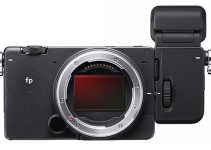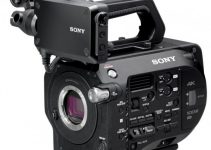The single-handed gimbal options have increased significantly in just a few months. The Ronin-SC has been all over the news lately as DJI launched the smaller sibling to the famous Ronin-S. Zhiyun-Tech, on the other hand, has been the most relevant competitor to DJI in the last couple of years, especially since the launch of the Weebill Lab considered as a main competitor of the Ronin-S.
But now we have another offering from Zhiyun, the Crane M2, a smaller and compact gimbal meant for action and point and shoot cams as well as very light mirrorless camera setups. In the next video, Mauro from MAURO FILMS will take a closer look at the newcomer and will showcase its capabilities in a real-world environment.
First things first. The size of the gimbal is slightly smaller than the bigger counterpart the Crane 3. The smaller footprint reduces the maximum payload that sits at around 720g, and, in fact, the suggested setup with the Sony A6400 and the ZEISS 55mm f1.8 lens is almost the maximum configuration you can get on the Crane M2 while balancing it correctly.
Inside the small soft shell case of the device, you’ll get the bare essentials. The gimbal itself, a small folding tripod to attach it to, and a couple of cables with a phone holder. On the left side of the gimbal’s handle, you’ll find a zoom button for controlling your smartphone, a USB-C port as well as 1/4-20″ screw mount. On the right-hand side, there’s the power button and the main menu access button.
Through the front panel, you can easily start and stop recording, toggle between different modes and finally use the joystick to navigate the simple menus, where you can set WiFi and such.
Having a so small and lightweight form factor, you’ll probably just stick the Crane M2 on the side of your backpack instead of getting it each time in the case.
Balancing back the gimbal is much easier once you’ve arrived at the location due to the spacers that will mark the distance used in the previous balancing. If you stick with the same setup, as most of us usually do, this will be a life-saver.
What is probably the nicest finishing touch, though, is the setup of the app. If you have a wireless camera, like the A6400 shown here, you can easily connect the two pieces using the QR code on the camera, and from there on you won’t need the app anymore.
The app itself allows a great number of settings, a feature you often miss on much more pricier or bigger gimbals. But how does it perform? Well, this gimbal is quite small, and the motors it sports can only take so much.
In the test with the maximum suggested configuration, a simple ND filter screwed on the lens was enough to make the footage shaky and, if not unusable, at least not what one may expect.
Overall, the size and load of the Crane M2 are clearly aimed at smaller workloads. It is a perfect choice for smartphones, action cameras and maybe some point and shoot cameras, but getting it for a mirrorless camera setup means that you’ll use it with small compact lenses, thus limiting your choices significantly, so if that’s your use-case, it would be better to look for another option.
[source: MAURO’S FILMS]
Order Links:
Zhiyun-Tech CRANE-M2 3-Axis Handheld Gimbal Stabilizer (B&H, Amazon)
Disclaimer: As an Amazon Associate partner and participant in B&H and Adorama Affiliate programmes, we earn a small comission from each purchase made through the affiliate links listed above at no additional cost to you.



